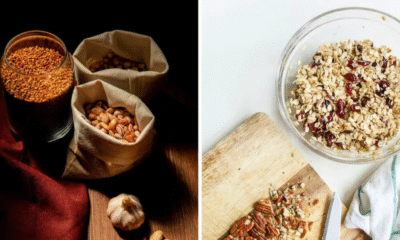Health & Wellness
Best Breakfast for Diabetics: Low-Sugar Indian Meals to Keep Blood Sugar Stable

Diabetes is one of the most common chronic health conditions in India, affecting millions of people across all age groups. It occurs when the body cannot produce enough insulin or does not use insulin effectively, leading to elevated blood sugar levels. Among the many lifestyle factors that influence diabetes management, diet plays a central role.
Breakfast, often called the most important meal of the day, can make or break your blood sugar control. Eating the right kind of low-sugar, high-fibre, and protein-rich breakfast helps prevent sudden glucose spikes and keeps you feeling fuller for longer. For diabetics, starting the morning with a balanced Indian breakfast can set the tone for the rest of the day.
Here are some healthy, diabetes-friendly Indian breakfast options that combine taste, nutrition, and blood sugar control.

Vegetable Upma – A High-Fibre Twist
Upma is a beloved South Indian breakfast dish, usually made with semolina (rava). However, for people with diabetes, traditional upma can cause blood sugar spikes due to its high glycemic index.
👉 The healthier alternative: prepare oats upma or broken wheat (dalia) upma. Adding fibre-rich vegetables like carrots, beans, peas, and capsicum enhances satiety and slows down glucose absorption. A squeeze of lemon adds freshness and improves digestion.
Moong Dal Cheela – The Protein Powerhouse
Made from ground moong dal (split yellow lentils), this savoury pancake is rich in protein and low in carbs. Unlike regular flour-based breakfast items, moong dal cheela digests slowly, helping in steady sugar release.
👉 You can enrich it further with chopped spinach, onions, or tomatoes for extra fibre and antioxidants. Pair it with mint chutney or low-fat curd for a wholesome diabetic-friendly breakfast.
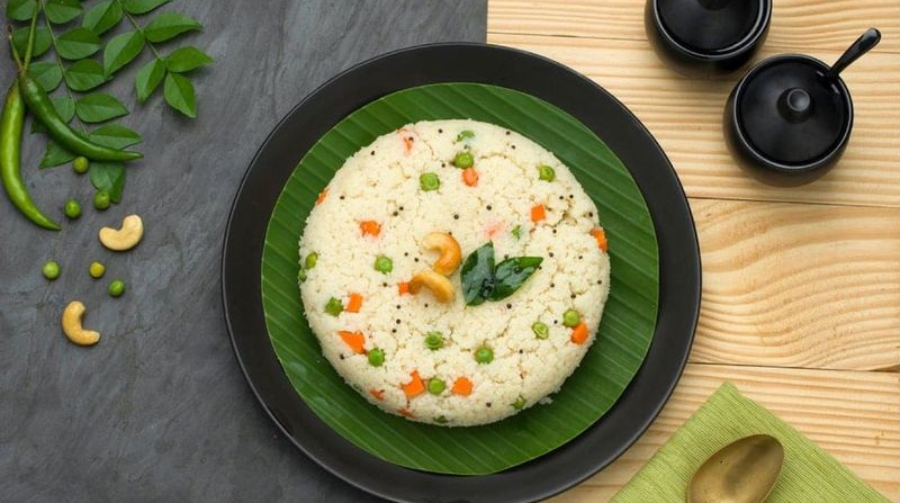
Oats Idli – Light, Nutritious, and Diabetic-Safe
Idlis are a staple breakfast in many Indian households. Replacing rice with oats makes them healthier for diabetics. Oats have a low glycemic index (GI) and are high in soluble fibre, which helps regulate blood sugar and cholesterol.
👉 Oats idlis are light, easy to digest, and can be steamed with grated carrots, coriander, or curry leaves for added nutrition. Pair them with coconut chutney (in moderation) or sambar packed with vegetables.
Besan Cheela – A Smart Alternative to Parathas
Besan (chickpea flour) cheela is another protein-rich breakfast option that works well for diabetics. Unlike refined flour parathas, besan cheela is low in carbs and high in fibre.
👉 Add chopped vegetables like onions, tomatoes, and spinach to increase its micronutrient value. Cook it with minimal oil on a non-stick pan for a healthier version.

Vegetable Poha – Comfort Food Made Healthier
Poha is a comfort food in many Indian homes. For diabetics, replacing regular white poha with brown rice poha or red rice poha makes a big difference. These alternatives have more fibre and a lower glycemic load.
👉 Adding peanuts, curry leaves, turmeric, and seasonal vegetables not only makes poha tastier but also ensures slower sugar release. Serve it warm with curd or buttermilk for a filling meal.
Sprouts Salad – A Refreshing Protein Boost
Sprouted moong beans or mixed sprouts are nutrient-dense and ideal for diabetics. They are rich in protein, fibre, and essential vitamins, which help stabilize blood sugar after meals.
👉 Combine sprouts with cucumbers, onions, tomatoes, coriander, and a squeeze of lemon juice for a refreshing breakfast salad. It is light, filling, and excellent for hot summer mornings.
Ragi Dosa or Ragi Porridge – The Superfood Choice
Ragi (finger millet) is one of the most diabetes-friendly grains. Packed with fibre, calcium, and iron, it digests slowly and prevents sugar spikes.
👉 A crisp ragi dosa with chutney or a warm bowl of ragi porridge makes a nutritious start to the day. Ragi is also gluten-free, making it suitable for people with both diabetes and gluten sensitivity.
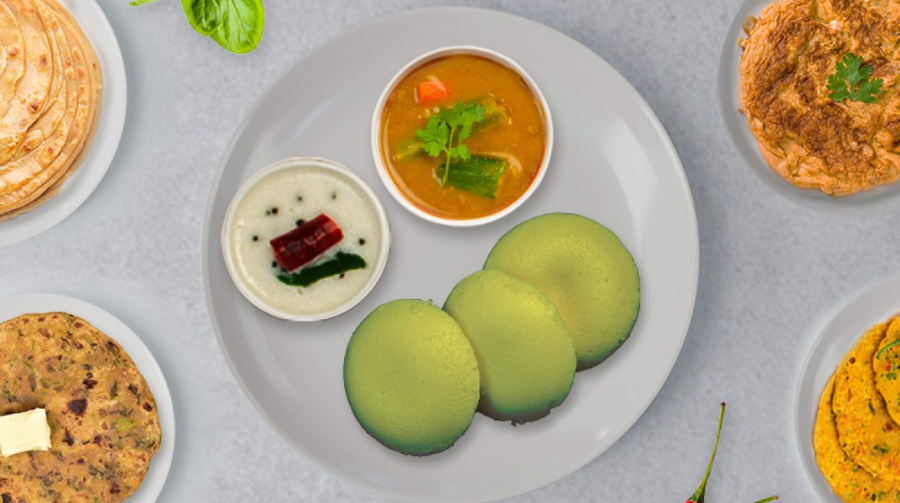
Why These Breakfasts Work for Diabetics
- Low Glycemic Index (GI): Prevents sudden glucose spikes.
- High Fibre Content: Slows digestion and keeps you fuller longer.
- Rich in Protein: Helps stabilize energy levels and supports muscle health.
- Nutrient-Dense: Packed with vitamins, minerals, and antioxidants to improve overall health.
By consistently choosing such breakfasts, diabetics can improve blood sugar management, reduce dependency on medications, and lower the risk of complications.
Additional Tips for a Diabetes-Friendly Breakfast
- Avoid refined carbs like white bread, sugary cereals, and fried snacks.
- Always include protein + fibre in every meal.
- Use healthy oils like olive oil or mustard oil in small quantities.
- Practice portion control – even healthy foods in excess can raise sugar levels.
- Pair breakfast with a short 15-minute walk for better glucose regulation.
Health & Wellness
Ragi vs Oats: What Should Diabetics Really Eat in the Morning?
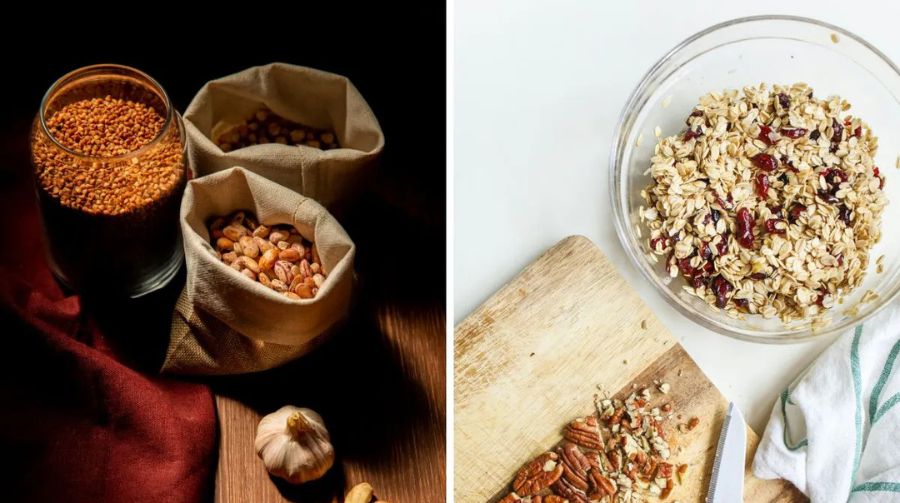
Breakfast is often called the most important meal of the day, and for people living with diabetes, it becomes even more crucial. The first meal of the morning sets the tone for blood sugar levels, energy, and satiety for the rest of the day. While sugary cereals and refined foods can cause dangerous spikes in glucose, nutrient-dense grains like ragi (finger millet) and oats are often recommended by nutritionists. But which one is truly the better option for diabetics?
According to health experts, both ragi and oats can be beneficial, but their effects differ slightly depending on your health priorities. Dr. Anshul Singh, Team Leader of Clinical Nutrition and Dietetics at Artemis Hospitals, explains, “Both ragi and oats are nutrient-rich options. The choice really depends on your health goals and how you prepare them.” Let’s take a closer look.
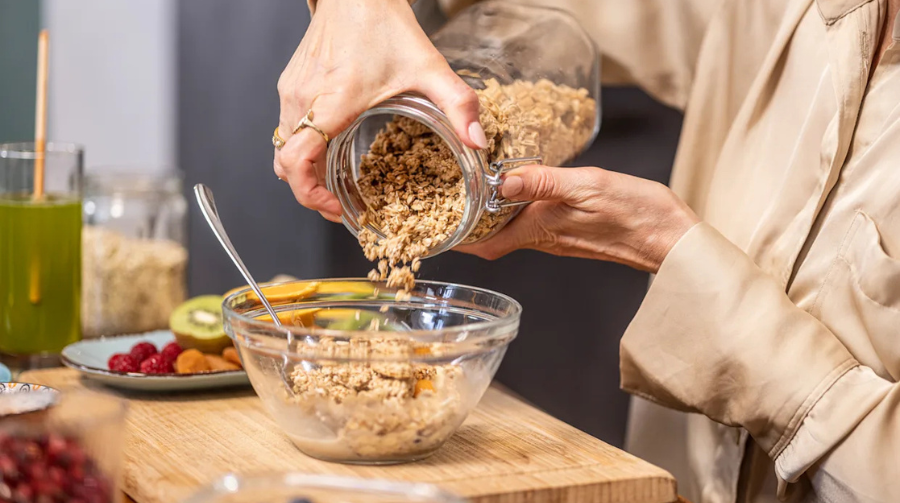
Ragi for Diabetes: A Traditional Super Grain
Ragi, or finger millet, has been a staple in Indian households for centuries. Known for its rich nutrient profile, it is particularly valued for its high levels of iron, calcium, and dietary fibre. The grain also has a low glycaemic index (GI), meaning it releases sugar slowly into the bloodstream instead of causing sudden spikes.
“Ragi is excellent for diabetics as its fibre keeps you fuller for longer, reduces hunger pangs, and supports smooth digestion,” notes Dr. Singh. Ragi also contains polyphenols, plant compounds that further support glucose control and help combat oxidative stress, a common concern in diabetes management.
However, preparation plays a big role. While traditional deep-fried ragi snacks or sweet ragi laddoos may add excess oil or sugar, healthier alternatives like fermented ragi dosa, ragi porridge, or ragi malt offer all the benefits without harmful additives.
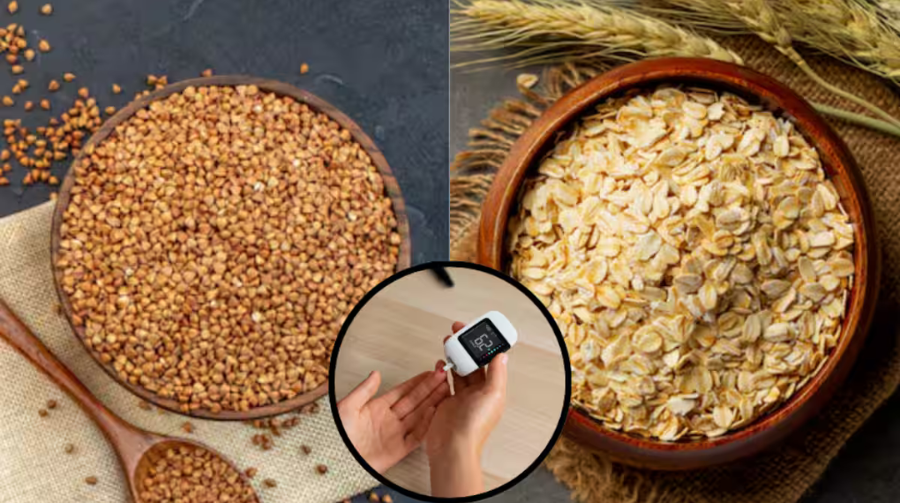
Oats for Diabetes: The Global Favourite
Oats, on the other hand, have gained international recognition as a “heart-healthy” grain. Their star nutrient is beta-glucan, a soluble fibre that slows digestion, reduces glucose absorption, and improves insulin sensitivity.
“Oats are an excellent breakfast choice for diabetics not only because they stabilize blood sugar but also because they reduce bad cholesterol, lowering the risk of heart disease,” explains Dr. Singh. Since people with diabetes are more prone to cardiovascular problems, oats can offer double protection.
But here too, the choice matters. Flavoured or instant oats often contain hidden sugars, artificial flavourings, and preservatives, which can undo the benefits. Nutritionists strongly recommend sticking to rolled oats or steel-cut oats, which can be cooked into porridge, added to smoothies, or turned into savoury dishes like vegetable oat upma.
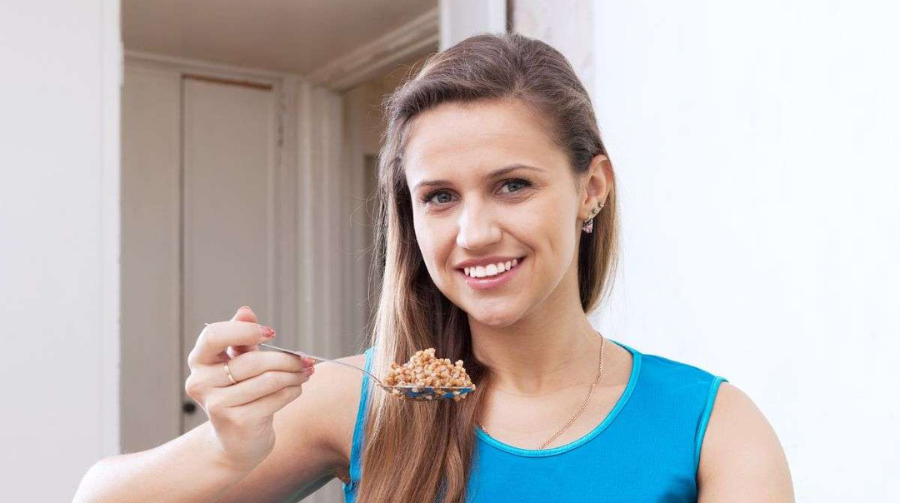
Ragi vs Oats: Which Should You Choose?
The truth is, there is no clear “winner.” Both ragi and oats have unique benefits, and the best choice depends on your health goals.
- Ragi is perfect if you’re looking for a traditional, calcium-rich, and iron-boosting grain that supports bone health and long-lasting satiety.
- Oats are ideal if your priority is cholesterol control, gut health, and reducing the risk of heart disease.
Dr. Singh recommends not choosing one over the other but rather including both in rotation: “The best approach is to enjoy ragi on some days and oats on others. This way, you get a wider range of nutrients, prevent food monotony, and support overall health.”
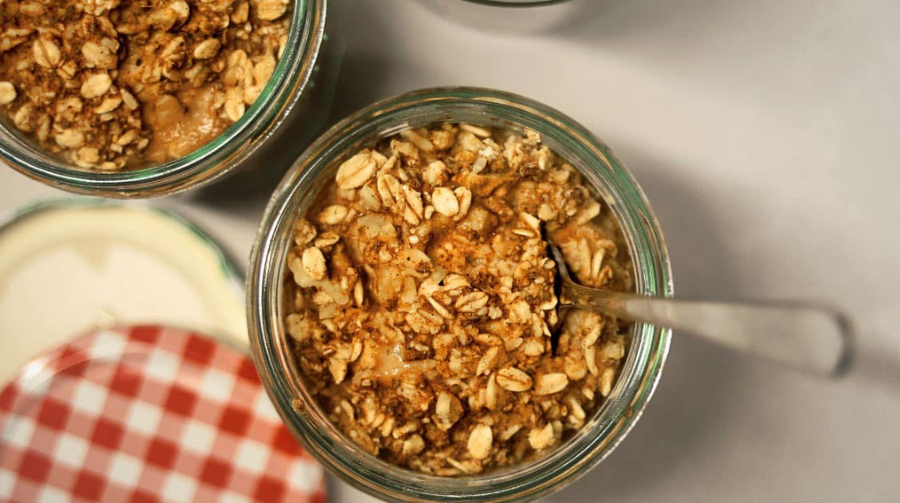
The Golden Rules for Diabetic-Friendly Breakfasts
No matter which grain you choose, a few guidelines remain essential:
- Always opt for unprocessed, natural versions.
- Avoid excess oil, ghee, sugar, or jaggery while preparing.
- Pair your grains with vegetables, pulses, or protein-rich foods for a balanced plate.
- Keep portion sizes moderate to avoid calorie overload.
Ultimately, the best diet for diabetes is not about obsessing over one single food but about balance, variety, and consistency. Whether it’s a warm bowl of oats with nuts or a comforting plate of ragi dosa, both grains can support your journey towards better blood sugar control and overall health.
Health & Wellness
Expert Opinion: Why Glasses Are Safer Than Contact Lenses During the Monsoon

During the monsoon, eye infections like conjunctivitis, styes, and fungal keratitis rise sharply. Experts advise wearing glasses instead of contact lenses for safer protection. Here’s why switching to specs can keep your eyes infection-free this rainy season.
Monsoon and Eye Health: A Risky Combination
The monsoon season is refreshing with cloudy skies, fresh air, and the earthy aroma of wet soil, but for your eyes, it’s a time of heightened risk. Along with waterlogging and humidity, the rainy season brings a sharp increase in eye infections.
For those who wear contact lenses, this season can be particularly problematic. A splash of rain or even excess humidity can make lenses a breeding ground for harmful microbes. Ophthalmologists warn that ignoring these risks may lead to serious eye conditions that require medical intervention.
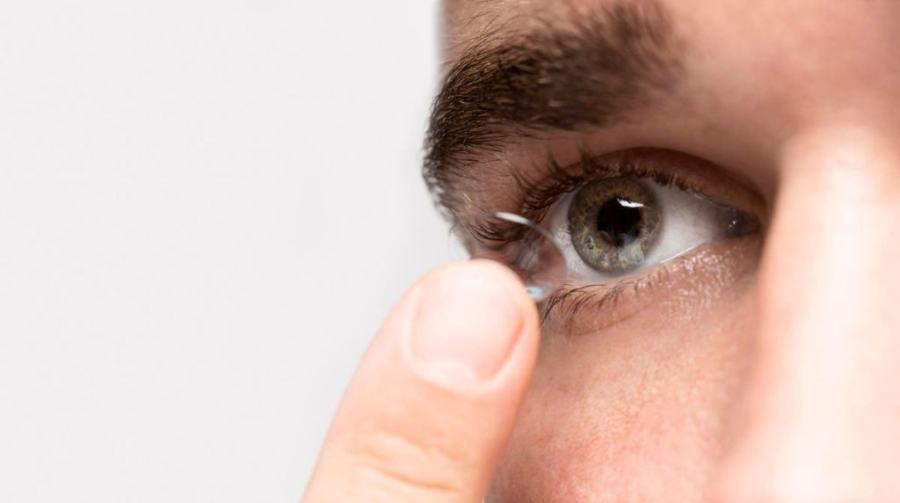
Why Monsoon Poses a Risk for Contact Lens Wearers
While contact lenses are stylish and convenient, they are not the best choice during the rains. Rainwater, contrary to how pure it looks, is filled with dust, bacteria, fungi, and pollutants.
- Even a small droplet on your lens can trap harmful microorganisms directly against your cornea.
- The humid monsoon climate prevents lenses from staying dry and sterile, increasing the risk of redness, irritation, or infection.
- Improper hygiene, such as reusing old lens solution or not disinfecting properly, makes the problem worse.
According to Dr. Rishi Raj Borah, Country Director, Orbis India, glasses are a far safer alternative during this season.

Glasses: The Safer Monsoon Choice
Switching to glasses during the rainy season offers several benefits:
- Natural Barrier Against Infection – Glasses shield your eyes from raindrops and airborne germs.
- Lower Risk of Contamination – Without lenses, there’s no risk of bacteria being trapped against your eye.
- Greater Comfort – Glasses reduce irritation, dryness, and that gritty sensation often felt with lenses in damp weather.
Simply put, glasses are the monsoon MVPs when it comes to eye safety.

Common Monsoon Eye Infections
Eye specialists report a seasonal spike in the following infections:
- Conjunctivitis (Pink Eye): Highly contagious and worsened by unhygienic lens use.
- Fungal Keratitis: A serious infection caused by fungi entering through contaminated water or dirty lenses.
- Styes: Painful lumps near the eyelid caused by bacterial infection, often aggravated by poor hygiene.
Such infections can escalate quickly if left untreated, making preventive care even more critical.
Expert Tips to Protect Your Eyes This Monsoon
Here are key eye care precautions from Dr. Borah and other ophthalmologists:
✅ Prefer glasses instead of contact lenses, especially outdoors.
✅ If you must wear lenses, maintain strict hygiene – wash hands thoroughly, disinfect lenses, and never let them come in contact with rainwater.
✅ Avoid reusing old lens solution or wearing expired lenses.
✅ Seek immediate medical help if you notice redness, blurred vision, pain, or swelling.
✅ Use protective anti-glare glasses while riding or driving in rain for added comfort and visibility.

Final Word
Rainy days are perfect for chai, pakoras, and cozy music—but not for contact lenses. By simply switching to glasses, you can avoid painful infections and maintain healthy, clear vision throughout the season. Combine this with proper hygiene and regular eye checkups, and you’ll enjoy the monsoon worry-free.
Health & Wellness
Diabetes: Types, Symptoms, Causes, Tests, Treatment and Prevention
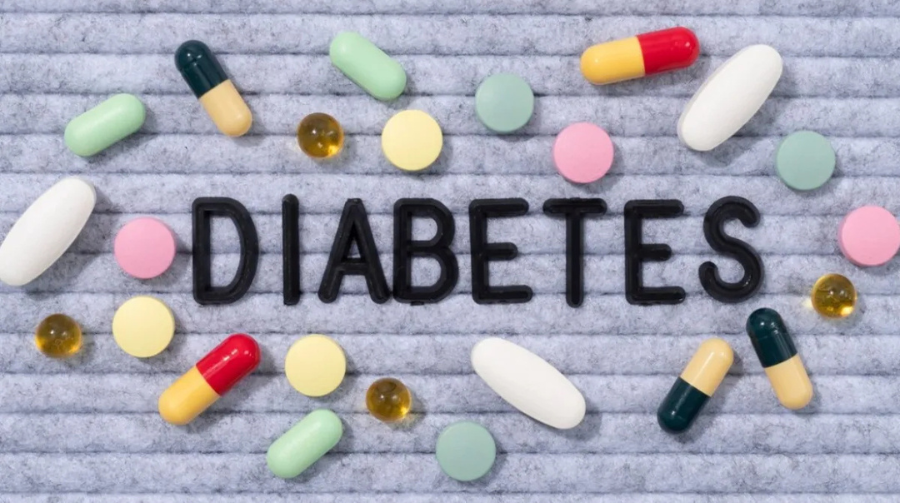
Diabetes is one of the fastest-growing health challenges in the world today. With millions of new cases being reported every year, the condition is no longer seen as a “lifestyle disease” affecting only the elderly—it is increasingly striking younger people, including teenagers and even children. From the early warning signs to the best diagnostic tests, daily diet tips, treatment options, and prevention strategies, this article provides a comprehensive guide, enriched with doctor insights, to help you understand and manage blood sugar effectively.
What is Diabetes?
At its core, diabetes is a chronic condition where the body either does not produce enough insulin or cannot use it effectively. Insulin is the hormone responsible for moving glucose (sugar) from the bloodstream into the cells for energy. When this process malfunctions, sugar remains in the blood, leading to high blood sugar levels (hyperglycemia).
Over time, this excess sugar acts like a slow poison, damaging vital organs including the heart, kidneys, eyes, and nerves. That’s why doctors emphasize not just controlling diabetes but also early diagnosis and lifestyle management.
[Reviewed by Dr. Ashok Kumar Jhingan, Senior Director, Centre for Diabetes, Thyroid, Obesity & Endocrinology, BLK-MAX Super Speciality Hospital.]

Types of Diabetes
- Type 1 Diabetes
- An autoimmune condition where the body’s immune system attacks insulin-producing cells.
- Usually diagnosed in children, teenagers, or young adults.
- Requires lifelong insulin therapy for survival.
- Type 2 Diabetes
- The most common type, often linked with obesity, lack of exercise, poor diet, and genetics.
- Once considered an “adult-onset” disease, it is now increasingly diagnosed in children and adolescents.
- Can often be managed with lifestyle changes, oral medications, and sometimes insulin.
- Gestational Diabetes
- Occurs only during pregnancy when hormonal changes interfere with insulin function.
- Usually disappears after childbirth but increases the future risk of Type 2 diabetes for both mother and child.
Diabetes in India and Worldwide
- India has earned the unfortunate title of being the “diabetes capital of the world.”
- According to the ICMR-INDIAB study, around 11.4% of Indians now have diabetes, with urban areas reporting 17.2% prevalence and rural areas 9.4%.
- Globally, India is home to 212 million diabetics, more than any other country.
The rapid rise of diabetes in both urban and rural India is a warning sign. Factors such as fast food consumption, sedentary jobs, stress, lack of exercise, and genetic predisposition are fueling this epidemic.
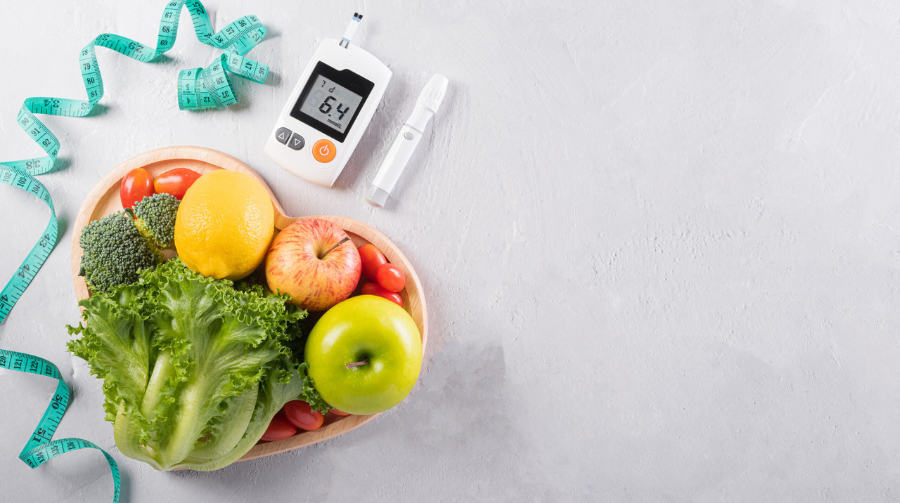
Why Diabetes is Rising in Young People
- Youth-onset Type 2 Diabetes is becoming alarmingly common.
- In the STRiDE-I study (South India), diabetes in young adults rose from 4.5% to 7.8% in just 10 years.
- Children with Type 1 Diabetes are also on the rise, with nearly 95,600 Indian children under 14 currently living with it.
Why this matters:
- Early diabetes means longer disease burden—living with the condition for decades.
- Complications show up sooner—heart, kidney, and nerve problems appear earlier.
- It places a financial and emotional strain on families.
Early Signs and Symptoms
Diabetes develops quietly, often without dramatic symptoms at first. That’s why it is sometimes called a “silent disease.” But the body usually gives some warning signals.
Common symptoms include:
- Frequent urination (especially at night)
- Excessive thirst
- Constant fatigue
- Blurred vision
- Unexplained weight loss
Silent or lesser-known symptoms:
- Slow healing wounds
- Frequent infections (UTIs, skin, yeast infections in women)
- Tingling or numbness in hands/feet (early neuropathy)
- Mood changes, depression, or unusual irritability
- Excessive sleepiness or confusion in elderly
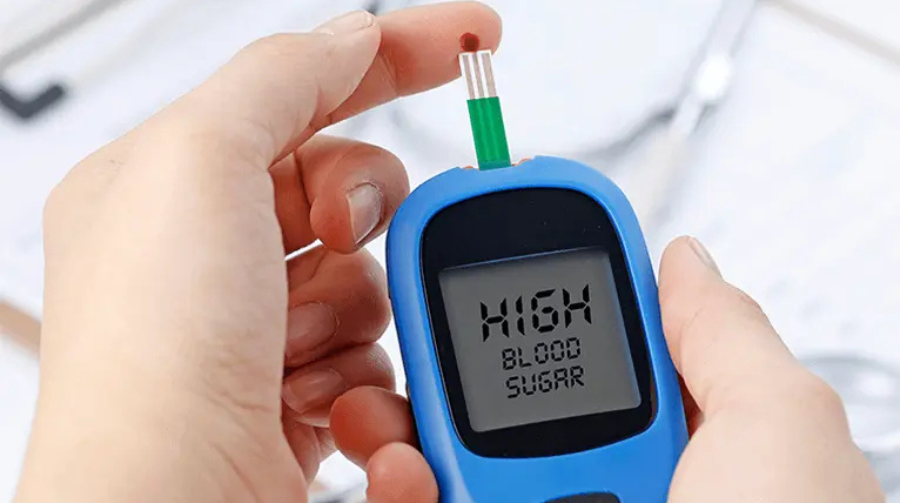
Causes and Risk Factors
- Genetic factors – family history raises the risk.
- Lifestyle habits – poor diet, lack of physical activity, smoking, alcohol.
- Obesity & Insulin Resistance – excess belly fat worsens insulin response.
- Stress & Poor Sleep – both disrupt hormone balance and sugar control.
Complications of Untreated Diabetes
If left uncontrolled, diabetes can cause life-threatening complications:
- Eye problems (diabetic retinopathy → blindness)
- Kidney damage (leading to dialysis or transplant)
- Heart disease (stroke, heart attacks)
- Nerve damage (neuropathy, amputations)
Diagnosis and Tests
Doctors use blood tests to confirm diabetes:
- Fasting Blood Sugar (≥126 mg/dl)
- HbA1c Test (≥6.5%) → shows 3-month sugar average
- Random Blood Sugar (>200 mg/dl with symptoms)
💰 In India, these tests are affordable and widely available (Rs. 100–800).
Diabetes in Women
Women often face unique challenges:
- Link between PCOS and diabetes → insulin resistance makes women with PCOS more prone.
- Gestational Diabetes during pregnancy → risks for both mother and baby.
- Unique symptoms like frequent UTIs, vaginal infections, sexual discomfort, irregular cycles.
Can Diabetes Be Cured?
- Type 1: No cure, lifelong insulin required.
- Type 2: No permanent cure, but remission is possible with weight loss, diet, and lifestyle changes.
- Gestational: Usually resolves post-pregnancy, but needs monitoring.
Diet and Foods to Avoid
- ❌ Refined sugar, white rice, fried snacks, sugary drinks.
- ✅ Whole grains, lentils, vegetables, fruits (in moderation), nuts, seeds, and high-fiber foods.
Complementary Care: Ayurveda & Home Remedies
🌿 Some natural remedies may support sugar control:
- Fenugreek seeds (Methi) – improve insulin use.
- Cinnamon (Dalchini) – boosts insulin sensitivity.
- Jamun fruit/seed – slows sugar absorption.
- Giloy (Guduchi) – reduces inflammation, supports immunity.
⚠️ These are not substitutes for medical treatment. Always consult your doctor.
Prevention Tips
- Maintain a healthy weight (even 5–7% weight loss helps).
- Exercise regularly (30 mins brisk walk daily).
- Eat balanced, fiber-rich meals.
- Get annual health checkups, especially if you have family history.
- Manage stress & sleep better.

Living Well with Diabetes
Having diabetes doesn’t mean giving up on a full, happy life. Many celebrities openly manage their diabetes—like Nick Jonas, Sonam Kapoor, and Tom Hanks—while inspiring others.
💡 Key to long-term success:
- Build sustainable habits, not short-term diets.
- Monitor sugar regularly.
- Stay in touch with doctors.
- Prioritize mental health and joy.
Final Word
Diabetes is not just about sugar—it’s about your entire lifestyle. With early diagnosis, timely treatment, and mindful daily choices, you can prevent complications and live a long, healthy, active life. Think of managing diabetes not as a restriction, but as an opportunity to take better care of yourself—today and for the years ahead.
-

 Celebrity Lifestyle6 months ago
Celebrity Lifestyle6 months agoEx-Cricketer Shikhar Dhawan Buys Ultra-Luxury Apartment Worth ₹69 Crore in Gurugram
-
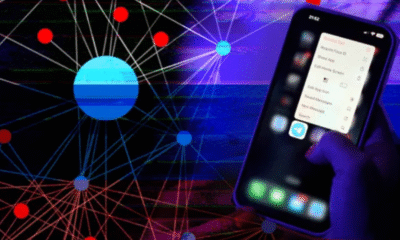
 Glamour & Entertainment5 months ago
Glamour & Entertainment5 months agoTelegram Channels Disseminating Pro‑Russian Propaganda in Poland
-
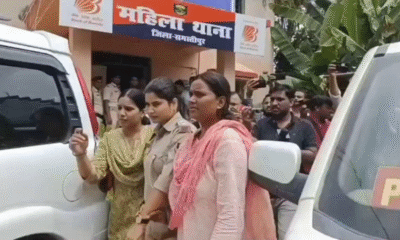
 Crime & Investigation3 months ago
Crime & Investigation3 months agoDelhi Police SI Neetu Bisht Caught Taking ₹20 Lakh Bribe – Shocking Details Emerge in Corruption Probe
-

 Business5 months ago
Business5 months agoAmazon sets 30‑day relocation deadline for corporate staff—opt out by resigning in 60 days
-

 Celebrity Lifestyle5 months ago
Celebrity Lifestyle5 months agoMaha Kumbh Girl Monalisa seen in car allegedly worth ₹1 crore
-

 Entertainment5 months ago
Entertainment5 months agoAbhijeet & Dr Tarika Reunite in CID 2 — Fans Say ‘Clear the Misunderstanding Now
-

 Education5 months ago
Education5 months agoNEET UG Controversy Explained: Paper Leak, Impersonations & Ongoing Probe
-

 Bollywood3 months ago
Bollywood3 months agoNo ₹3 Lakh Fine or 2-Year Jail: The Truth Behind the ‘Hakla’ GIF Buzz

